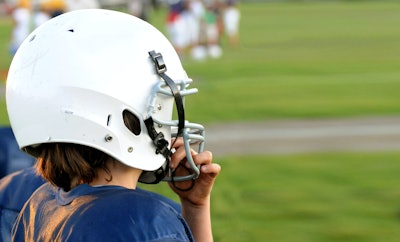
A recent study from Rutgers University suggests that the tool being used to diagnose concussions might be overestimating the condition and wrongly identifying symptoms like fatigue and neck pain caused from intense exercise and not a brain injury, according to Rutgers researchers.
This new research raises questions about the Sport Concussion Assessment Tool (SCAT), a questionnaire widely used along with other methods to diagnose concussions sustained during sports. Findings were presented at the American Physiological Society annual meeting April 5.
“Our findings highlight the importance of considering the effects of exercise and fatigue in assessing concussions in athletes on the field,” said the study’s first author, Stephanie Iring, a doctoral candidate in the laboratory of Jorge Serrador, an associate professor at Rutgers New Jersey Medical School and at Rutgers School of Health Professions, according to a press release.
“While players with a head impact may report more symptoms generally, we have to be cautious in using all symptoms on the assessment since some are common after intense exercise even when there was no head impact.”
A concussion is a traumatic brain injury usually caused by a blow to the head. Although not typically life-threatening the effects can be serious and long lasting. About 3.8 million sports-related concussions are reported each year in the United States.
SCAT is a tool designed for use by medical professionals to determine whether a player has suffered a concussion. The assessment includes questions about “red flag” symptoms such as neck pain, headache, muscle weakness and vision problems in addition to tests to assess memory loss and other symptoms.
In previous studies of the tool, researchers compared symptoms in athletes who experienced a blow to the head with people who have been at rest. For the new study, researchers compared SCAT scores in rugby players who had sustained a blow to the head with teammates who had just played an intense rugby match but did not have a head impact. They assessed 209 players, 80 of whom had experienced a head impact and 129 who had not.
Compared with those who did not suffer a head injury, those who did have a head injury had significantly more symptoms on the SCAT assessment, reporting 26 symptoms on average. Non-injured players reported about nine symptoms. However, many players without a head injury had symptoms similar to those reported by head-injured players, including fatigue and neck pain.
“Our data shows that exertion during a match increased the number and severity of self-reported symptoms in control players even though they had not experienced a head impact,” Iring said. “This could lead to difficulty differentiating these players from those that had experienced a head impact when using on-field assessments.”
Some symptoms, including headache and “not feeling right,” were more closely associated with having a head injury. This suggests these symptoms might be a stronger indicator of concussion in players who have just finished an intense game, according to researchers. In addition to headache, other symptoms more common in those with a head injury included cognitive-sensory effects, emotional-affective symptoms and hypersensitivity. The researchers suggested further studies are needed to examine how these components can be used along with current physiological measures to better assess a concussion in athletes.





































